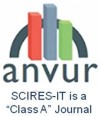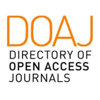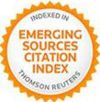Abstract
Lifelong learning has recently emerged as an innovative learning strategy that aims to satisfy the individuals' desire for continuous and unrestricted learning. However, technological progress, especially mobile networks and their applications, has enhanced schooling conditions and made them more accessible. In that respect, this paper aspires to increase the participation level of learners by involving them in the production process of teaching content. In this context, a novel educational system called XPShar has been proposed as a client-server application enabling users to share content of cultural heritage. The system is based on integrating the principle of openness with the flipped classroom approach. Finally, the study focused on the benefits of embracing ICT for an effective learning process via openness and the right to access information.
Keywords
Full Text:
PDFDOI: http://dx.doi.org/10.2423/i22394303v12n1p111
References
Agosti, M., Orio, N., & Ponchia, C. (2018). Promoting user engagement with digital cultural heritage collections. International Journal on Digital Libraries, 19(4), 353–366. https://doi.org/10.1007/s00799-018-0245-y
Arif, A. S. M., Du, J. T., & Lee, I. (2012). Towards a model of collaborative information retrieval in tourism. Proceedings of the 4th Information Interaction in Context Symposium, 258–261. https://doi.org/10.1145/2362724.2362769
Bassano, C., Barile, S., Piciocchi, P., Spohrer, J. C., Iandolo, F., & Fisk, R. (2019). Storytelling about places: Tourism marketing in the digital age. Cities, 87, 10–20. https://doi.org/10.1016/j.cities.2018.12.025
Belazoui, A., Telli, A., & Arar, C. (2021). Web-Based Learning Under Tacit Mining of Various Data Sources. International Journal of Emerging Technologies in Learning (iJET), 16(16), 153–168. https://doi.org/10.3991/ijet.v16i16.23405
Bourahla, M., Telli, A., Benferhat, S., & Chau, M. T. (2019). Classifying Non-Elementary Movements in Vietnamese Mõ Dances. In V. G. Duffy (Ed.), Digital Human Modeling and Applications in Health, Safety, Ergonomics and Risk Management. Human Body and Motion (pp. 128–139). Springer International Publishing. https://doi.org/10.1007/978-3-030-22216-1_10
Bujari, A., Bergamini, C., Corradi, A., Foschini, L., Palazzi, C. E., & Sabbioni, A. (2020). A Geo-distributed Architectural Approach Favouring Smart Tourism Development in the 5G Era. Proceedings of the 6thEAI International Conference on Smart Objects and Technologies for Social Good, 12–17. https://doi.org/10.1145/3411170.3411242
Burova, A., Kelling, C., Keskinen, T., Hakulinen, J., Kallioniemi, P., Väätäjä, H., & Turunen, M. (2019). Promoting local culture and enriching airport experiences through interactive storytelling. Proceedings of the 18thInternational Conference on Mobile and Ubiquitous Multimedia, 1–7. https://doi.org/10.1145/3365610.3365640
Chang, H. (2020). The Flipped Classroom Approach for Tourism English Learners. ENGLISH TEACHING(영어교육), 75(3), 93–107. https://doi.org/10.15858/engtea.75.3.202009.93
Chang, Y.-J., Yang, C.-Y., Kuo, Y.-H., Cheng, W.-H., Yang, C.-L., Lin, F.-Y., Yeh, I.-H., Hsieh, C.-K., Hsieh, C.-Y., & Wang, Y.-S. (2019). Tourgether: Exploring Tourists’ Real-time Sharing of Experiences as a Means of Encouraging Point-of-Interest Exploration. Proceedings of the ACM on Interactive, Mobile, Wearable and Ubiquitous Technologies, 3(4), 128:1-128:25. https://doi.org/10.1145/3369832
Corpas, N., & Castillo, A. (2019). Tourism 3.0 and archaeology: Approaching tourists’ generated-content of World Heritage sites. PASOS. Revista de Turismo y Patrimonio Cultural, 17(1), 39–52.
Davis, N. L. (2016). Anatomy of a flipped classroom. Journal of Teaching in Travel & Tourism, 16(3), 228–232. https://doi.org/10.1080/15313220.2015.1136802
Garlandini, A. (2021). Museums and Heritage in the digital age. The challenge of cultural change and technological innovation. SCIRES-IT - SCIentificRESearch and Information Technology, 11(1), 11–18. https://doi.org/10.2423/i22394303v11n1p11
Gomaa, H. (Ed.). (2011). Introduction. In Software Modeling and Design: UML, Use Cases, Patterns, and Software Architectures (pp. 3–13). Cambridge University Press. https://doi.org/10.1017/CBO9780511779183.003
Gretzel, U., Sigala, M., Xiang, Z., & Koo, C. (2015). Smart tourism: Foundations and developments. Electronic Markets, 25(3), 179–188. https://doi.org/10.1007/s12525-015-0196-8
Hajirasouli, A., Banihashemi, S., Kumarasuriyar, A., Talebi, S., & Tabadkani, A. (2021). Virtual reality-based digitisation for endangered heritage sites: Theoretical framework and application. Journal of Cultural Heritage, 49, 140–151. https://doi.org/10.1016/j.culher.2021.02.005
Kesorn, K., Juraphanthong, W., & Salaiwarakul, A. (2017). Personalized Attraction Recommendation System for Tourists Through Check-In Data. IEEE Access, 5, 26703–26721. https://doi.org/10.1109/ACCESS.2017.2778293
Laddha, S. S., Koli, N. A., & Jawandhiya, P. M. (2018). Indian Tourism Information Retrieval System: An Onto-Semantic Approach. Procedia Computer Science, 132, 1363–1374. https://doi.org/10.1016/j.procs.2018.05.051
Logesh, R., Subramaniyaswamy, V., & Vijayakumar, V. (2018). A personalised travel recommender system utilising social network profile and accurate GPS data. Electronic Government, an International Journal, 14(1), 90–113. https://doi.org/10.1504/EG.2018.089538
McGookin, D., Tahiroğlu, K., Vaittinen, T., Kytö, M., Monastero, B., & Carlos Vasquez, J. (2019). Investigating tangential access for location-based digital cultural heritage applications. International Journal of Human-Computer Studies, 122, 196–210. https://doi.org/10.1016/j.ijhcs.2018.09.009
Melvin, J., Winklhofer, H., & McCabe, S. (2020). Creating joint experiences—Families engaging with a heritage site. Tourism Management, 78, 104038. https://doi.org/10.1016/j.tourman.2019.104038
Nisi, V., Dionísio, M., Silva, C., & Nunes, N. J. (2019). A Participatory Platform Supporting Awareness and Empathy Building Between Tourists and Locals: The Há-VitaCase Study. Proceedings of the 13th Biannual Conference of the Italian SIGCHI Chapter: Designing the next Interaction, 1–10. https://doi.org/10.1145/3351995.3352049
Psomadaki, O. I., Dimoulas, C. A., Kalliris, G. M., & Paschalidis, G. (2019). Digital storytelling and audience engagement in cultural heritage management: A collaborative model based on the Digital City of Thessaloniki. Journal of Cultural Heritage, 36, 12–22. https://doi.org/10.1016/j.culher.2018.07.016
Telli, A., Chau, M. T., Bourahla, M., Tabia, K., & Benferhat, S. (2018). An Ontology for Classifying Vietnamese Dance Movements. Proceedings of the International Conference on Pattern Recognition and Artificial Intelligence, 23–29. https://doi.org/10.1145/3243250.3243253
Yu, Q., Pickering, S., Geng, R., & Yen, D. A. (2021). Thanks for the memories: Exploring city tourism experiences via social media reviews. Tourism Management Perspectives, 40, 100851. https://doi.org/10.1016/j.tmp.2021.100851
Zhou, X., Tian, J., Peng, J., & Su, M. (2021). A Smart Tourism Recommendation Algorithm Based on Cellular Geospatial Clustering and Multivariate Weighted Collaborative Filtering. ISPRS International Journal of Geo-Information, 10(9), 628. https://doi.org/10.3390/ijgi10090628
Article Metrics
Metrics powered by PLOS ALM
Refbacks
- There are currently no refbacks.
Copyright (c) 2022 Chafik Arar, Abdelouahab Belazoui, Abdelmoutia Telli

This work is licensed under a Creative Commons Attribution-NonCommercial-NoDerivatives 4.0 International License.
SCIRES-IT, e-ISSN 2239-4303
Journal founded by Virginia Valzano






